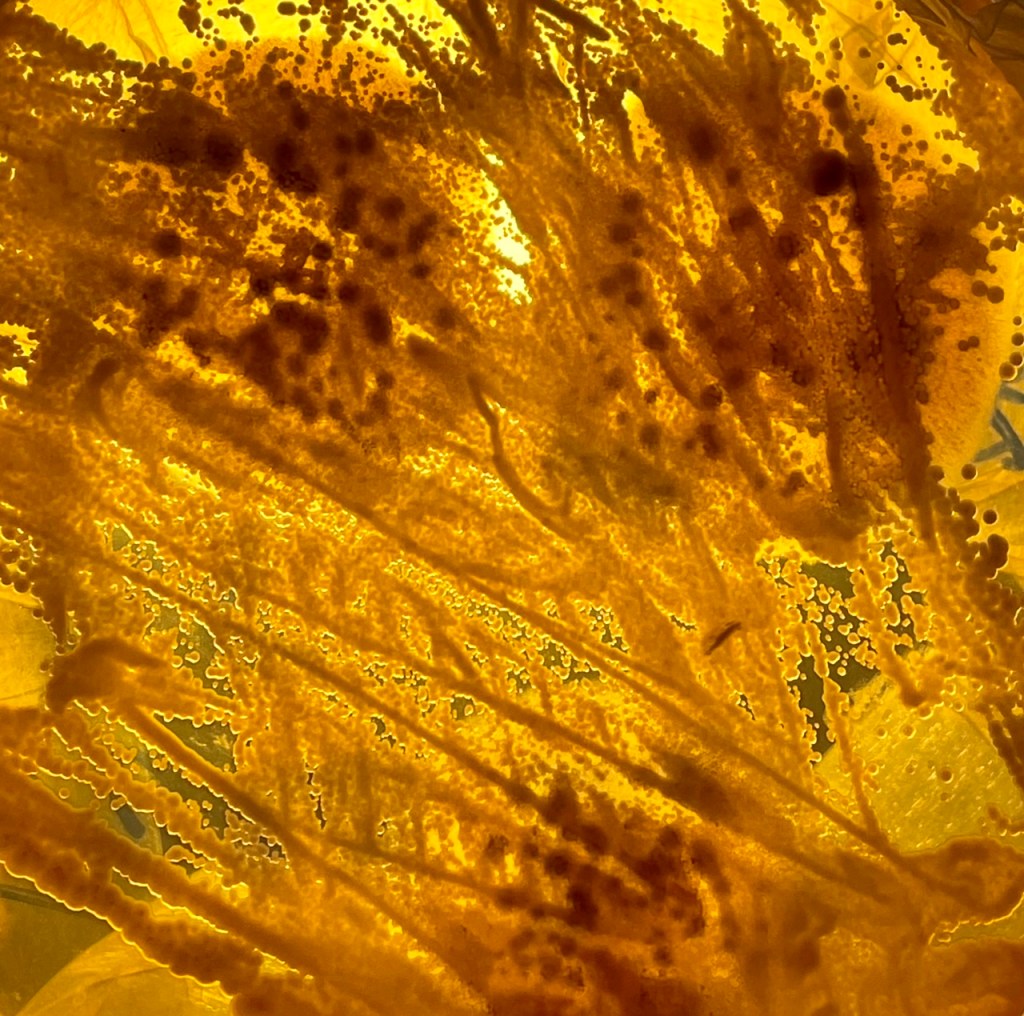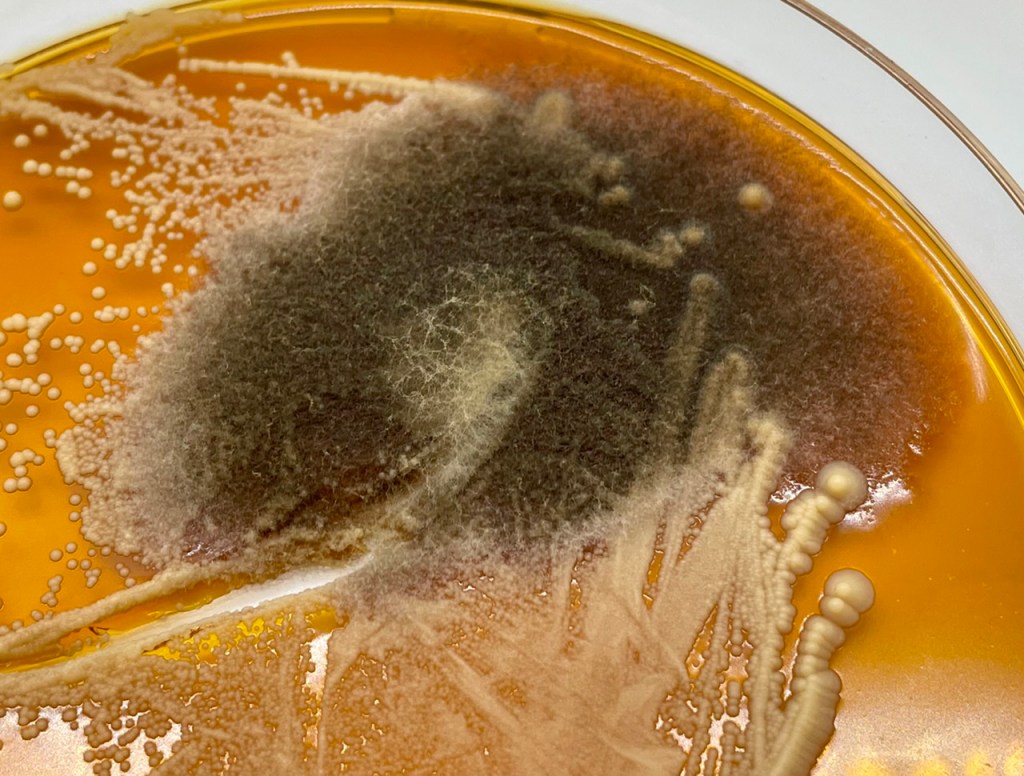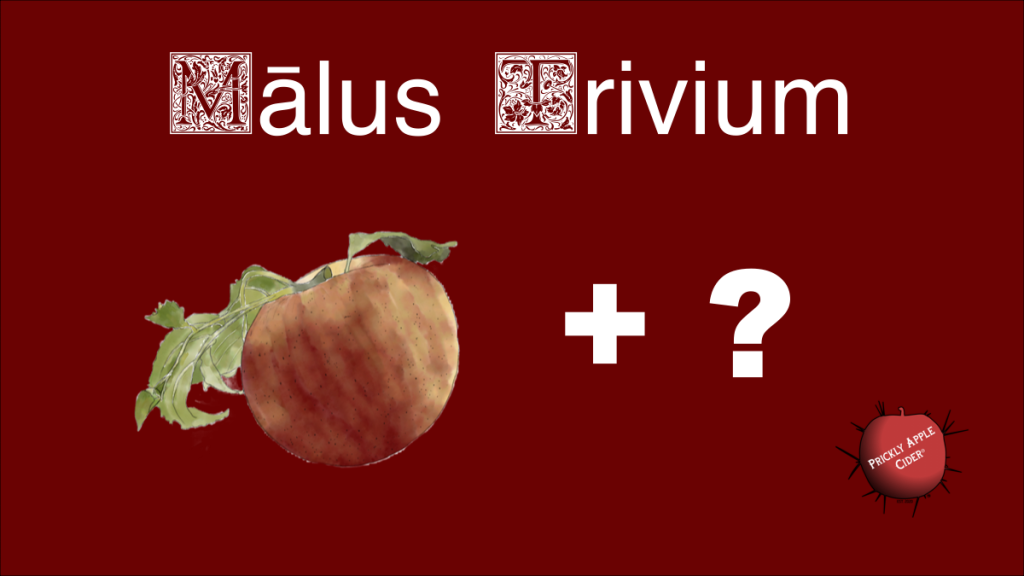Mold… Just the name can conjure up bad images and usually, it’s not something that is positive. There are a few positive occurrences, think cheeses like blue or Gorgonzola, where the mold makes that pungent flavor that many enjoy. However, for hard cider making, mold is usually associated with things not going the way they should. Mold isn’t something often talked about in cider making processes unless it’s the troubleshooting chapter. But, have you ever thought about what it really is, why it would occur in your cider making process, and how you should address it? Let’s delve into molds.
What are molds?
There are three main organisms that you can encounter while making hard cider. These are yeast, bacteria, and molds. Usually, yeast and bacteria are considered beneficial to the hard cider making process. They create aromas, convert sugar to ethanol, transform acids, and generally increase stability of your hard cider. I’m not saying that everything they make it positive. They can create undesirable aromas, fusel alcohols, histamines, and acetic acid, which will ultimately turn your hard cider into vinegar. However, without yeast and bacteria, you couldn’t make hard cider. You don’t need molds to make hard cider and you don’t really want it. They can cause allergic reaction and can create mycotoxins, which can cause chronic or acute illness.
Both yeast and mold are eukaryotes while bacteria are prokaryotes. This is a reference to how the cells are structured. In simple terms, eukaryotes have organs (organelles) that are self contained within individual membranes. A prokaryote generally has fewer organs and they are not contained within individual membranes. Eukaryotes are generally more complex organism. For example, they contain mitochondria (think DNA) where bacteria don’t.
Yeast and molds are both eukaryotes and they are both fungi. So, are they just two names for the same thing? The difference between yeast and molds are that yeast are a single-cell organisms while molds are multi-celled. Molds have a filament or thread-like structure and they grow on the surface of things. You won’t find mold growing suspended in your cider. That is yeast. You might find mold growing on the surface of your fermenter or the top of you cider, as part of a yeast and pectin cap or brew bag floating on the surface of your cider. Also, mold is colorful while yeast is white or colorless (1). That blue, green, yellow, or black fuzzy stuff is mold.


Why would you get mold?
Mold, like yeast and bacteria is constantly around us. Mold spores float in the air. During dry times, this is a survival tactic as they are picked up and moved to a new potentially desirable habitat. What is that habitat? Mold likes warmth and damp. Also, besides some type of nourishment, it needs oxygen. The two most common places you will find this environment in hard cider making is the orchard or apple storage and the headspace in your fermenter. Apples that are damaged or become overripe can get mold growing on them. This seems to be more often found in grapes where botrytis or gray mold can occur, especially when conditions are hot and humid. It is less common but I’ve walk orchards with molding fruit on the ground.
The fermenter is the most likely place you will see mold. This is especially true if you have significant headspace, lack a good seal or your fermenter is regularly opened, and you have residue or pulp floating on the surface or stuck to the wall. Mold needs oxygen and while your juice might initially have dissolve oxygen in it, mold won’t grow submerged in hard cider. The acid, alcohol, and lack of oxygen make the growing environment uninhabitable. I use apple peels in my hard cider during primary fermentation. The CO2 can float these and keep the on the surface, making this a good environment for mold growth. A yeast cap with pulp stuck to the side could represent another opportune environment for mold. However, for both of these, it still needs oxygen. That means you are probably opening your fermenter too much, or it’s not effectively sealed allowing oxygen into the headspace.
How do you get rid of Mold?
First, the best way to get rid of mold in your hard cider fermentation process is to prevent it from ever starting. Use healthy fruit. Rinse your fruit with clean water. Sanitize all your equipment. Lastly, ensure your fermenter has a good seal and avoid opening your fermenter until you are ready to process it to secondary or aging. If you are using an adjunct in secondary that might be in a bag, like hops or spices, consider weighting it so that it will sink and not float at the top. However, even doing all of this, you might still get infected with mold.
If you do get some mold, what should you do? Do you need to pour your cider down the drain? Remember, mold grows on the surface. If you have a piece of bread with mold on it, the filament nature of mold means that it’s most likely embedded and growing throughout the bread. In this situation, the bread is the substrate that is infested with the mold. That’s not the same thing for cider. The mold is growing in the substrate, which is on the surface of your cider. This could be a piece of peel sticking above the cider or to the side of your fermenter or aging tank, an adjunct bag peaking above the surface, or just the pectin and yeast cap floating on top.
Mold won’t grow in your hard Hard cider, only on the surface. Therefore, you could simply rack off your cider leaving the offending mold on the surface behind. However, molds can produce mycotoxins, which are harmful to humans. These mycotoxins could be in the cider, even if the mold is no longer present. Wines can have mycotoxins even without an obvious mold bloom during the fermentation process. This can be from botrytis or gray mold that formed on overripe or damaged fruit in the vineyard. One treatment for the removal of mycotoxins is bentonite, which is a common fining agent used in wine. This agent is known to absorb and reduce mycotoxins caused by grapes infected with botrytis. It could also be a treatment for cider that has been infected with mold.
Besides bentonite, there are other potential treatments for mycotoxins in cider. While few, there are studies and research papers on lactic acid bacteria (LAB) and some phenolic compounds being capable of binding with mycotoxins and reducing them (2). Add this to my list of growing reasons you may not want to use potassium sulfite (Campden) tablets in your cider as they kill off the LAB microflora. As with most aspects of hard cider making, there is no easy or simple solution when it comes with how to deal with mold. However, you should remember, it is not just a flavor issue. Mycotoxins are not something you just want to ignore. If you have a small batch of cider, you didn’t catch the mold early, or you are uncomfortable with the idea of potentially having mycotoxins in your hard cider, pour it down the drain and execute a heavy cleaning and sanitation regime to your equipment. Explore The Shop for the cleaners and sanitizers that I use and recommend. You should also consider your process and how you allowed oxygen into it.
If you have a large batch, caught the mold early, or are less worried, I would still recommend that you consider bentonite treatment, MLF naturally through aging on the lees or through inoculation with LAB, and even send a sample out for testing at a laboratory. Most countries limit the acceptable level of mycotoxins that can be present in wines so getting it checked is an available process. It’s always better to be safe but the best solution is prevention.
(1) Janet White, Difference Between Molds and Yeasts, Difference Wiki, Aug 3, 2019, https://www.difference.wiki/molds-vs-yeasts
(2) D.K.D. Dalié, A.M. Deschamps, F. Richard-Forget, Lactic acid bacteria – Potential for control of mould growth and mycotoxins, Food Control 21 (2010) 370–380
Other articles from PricklyCider.com that might be of interest.
Did you enjoy this article? Don’t miss future posts from PricklyCider.com by following us today! PricklyCider.com is your source for all things cider.





